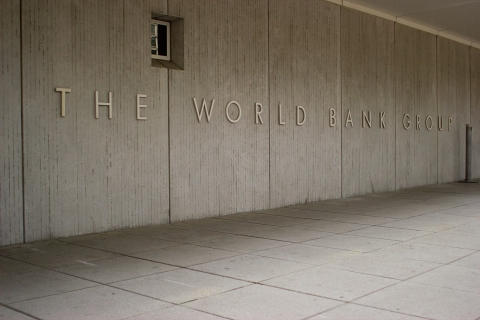
Pope Francis and leaders from the Global South call for a new international financial architecture that breaks the cycle forcing many countries to spend more on debt repayments and interest than on caring for people and the planet.
The following article was published in the November-December 2024 issue of NewsNotes.
A quarter of a century ago, the “Jubilee 2000” campaign led to the cancellation of more than $100 billion in debt owed by 35 of the world’s poorest countries. Twenty-five years later, global public debt keeps rising, forcing many lower-income countries to spend more on debt repayments than on climate, health, and education priorities.
The German Catholic Bishops Conference’s Global Sovereign Debt Monitor reveals that, in 2024, countries in the Global South will have to make more debt service payments to their external creditors than ever before. In 130 of the 152 countries surveyed in the Global South, 55% are critically or very critically indebted, in contrast to only 37% before the covid-19 pandemic.
More than one billion U.S. dollars a day are needed for debt service payments. According to the UN report titled “A World of Debt,” more than 3.3 billion people — almost half of the world’s population — live in countries that spend more on debt service than on education or healthcare. The UN Secretary-General calls this downward spiral a “systemic failure” of the global community.
Heavily indebted countries are often compelled to export extensively because earning a foreign trade surplus is the only way to obtain the hard currency required for debt repayments. This often forces countries to take drastic measures: they restrict their citizens’ consumption, neglect sustainable development and labor rights, and harm the environment. These connections highlight that the global debt crisis is a major cause of famines and a significant reason for the world’s failure to achieve the UN’s Sustainable Development Goals.
No lasting solution to the debt crisis has emerged. Existing debt workout mechanisms are inadequate and heavily influenced by the interests of creditors.
In response to debt crises, many countries must adopt extensive austerity measures – partly because creditors are rarely willing to cancel their claims. This often means deep cuts to basic social services.
In Sri Lanka, for example, the steep rise in food and energy prices severely impacts people’s daily lives. At the same time, social benefits are reduced, with access to free education and universal healthcare increasingly restricted. As a result, malnutrition, school dropouts, and youth unemployment are all increasing.
The situation in sub-Saharan Africa is particularly problematic: The Global Sovereign Debt Monitor 2024 finds that 67% of sub-Saharan African countries belong to the group of critically or very critically indebted countries. One of the reasons for this is that in 2022, the economy in sub-Saharan Africa grew much more slowly than other regions of the Global South. Although public debt is growing in all regions, only in Africa it is growing faster than GDP.
Heavily indebted countries like Sri Lanka, Malawi, Zambia, and Ghana need the fiscal leeway necessary for pursuing development and transforming into sustainable societies. This means addressing the climate crisis must take center stage — something only debt relief can allow.
A major challenge remains to unite all stakeholders and creditors to negotiate adequate debt relief. Unfortunately, the creditor landscape is more complex than it was 25 years ago.
Most claims against the Global South now are held by private creditors, including many hedge funds licensed in the state of New York and in the UK, followed by the World Bank and IMF. However, official bilateral creditors such as the United States and EU nations also are important. They can work to ensure fair debt relief. They especially have political sway over private and multilateral creditors: 70% of claims against the Global South are held by entities in the EU and G7 nations.
Pope Francis announced 2025 to be a Jubilee year in the Catholic church, a year of forgiveness, reconciliation, and hope that occurs every 25 years. The vision of Jubilee is most fully explained in the Book of Leviticus (25: 1-55) as a time to cancel debts, restore community, and establish freedom from debt bondage.
The Jubilee 2025 vision includes principles of Catholic Social Teaching such as upholding life and the dignity of the person, care for the common good, preferential option for the poor and vulnerable, and care for creation.
Jubilee 2025 also puts to right the three principles of justice that are violated by the debt crisis: fairness in all agreements, allocation of income and wealth in light of those with unmet needs, and participation of all in society.
Faith in action
Join the Jubilee USA Network to connect with Catholics around the world for Jubilee actions in 2025. https://www.jubileeusa.org/
Photo of the World Bank Group Headquarters sign in Washington, DC, 16 May, 2012, by Victor Grigas via Wikimedia Commons.
